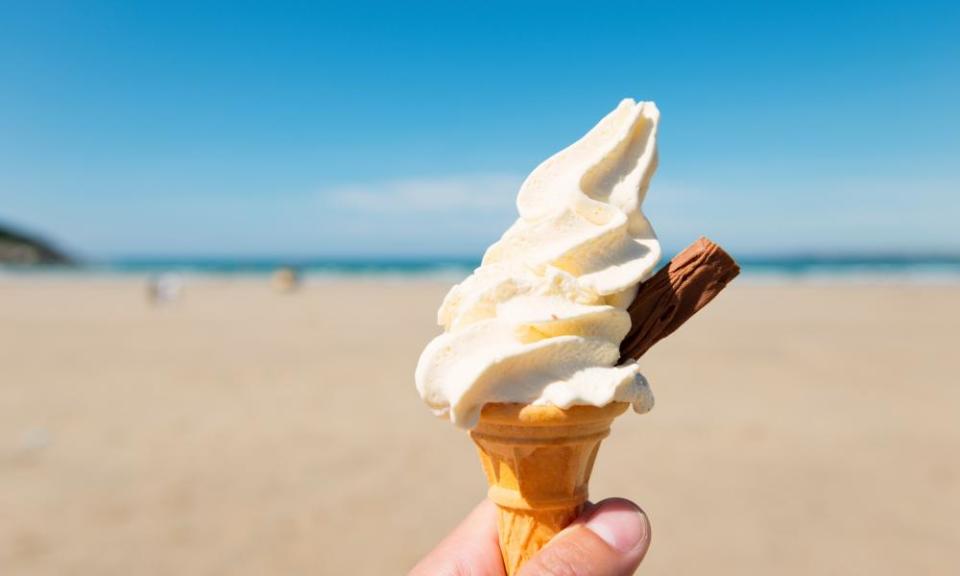Ice-cream demand fires up supermarket sales in June

Booming sales of ice-cream, gin and cider during the heatwave have combined with a jump in inflation to deliver the biggest rise in supermarket sales in more than five years.
Sales revenue rose 5% in the 12 weeks to the end of June, the biggest increase since March 2012, in stark contrast to the 0.2% decline a year before, according to the latest market share data from Kantar Worldpanel.
Fraser McKevitt, head of retail and consumer insight at Kantar Worldpanel, said: “The market’s robust performance this period is partly down to particularly weak sales growth last year and a continuing increase in like-for-like grocery inflation, which is now running at 3.2%. That’s an extra £133 on the average household’s annual shopping bill.”
Rising prices of products such as butter, fish and instant coffee were partially offset by falling prices elsewhere, including cooked poultry.
The Kantar figures are not the official inflation figures but are based on 75,000 identical products compared year on year in the proportions purchased by shoppers. The most recent government figures showed UK inflation rose to a four-year high of 2.9% in May.
The spell of warm weather – even before the most recent heatwave – also helped the grocers. Sales of ice-cream rose 12% and cider 16%, according to Kantar.
“The early summer weather gave supermarkets a much needed shot in the arm,” said Mike Watkins, head of retailer and business insight at analysis firm Nielsen UK, who found that soft drinks were up 9.1%, alcohol up nearly 7% and frozen food up 7%, led by a 24% leap in sales of ice-cream lollies. One of the strongest growth areas was gin which recorded a 35% jump in sales, partly due to Father’s Day.
Watkins added that the good weather meant outdoor dining was back on the agenda with sales of fresh produce up 3.4% and sales of quiches up 11%. He said the warm weather was likely to fuel further sales growth.
Morrisons came out among the top four grocers – which includes Tesco, Sainsbury’s and Asda. All four achieved growth for a third consecutive period. Tesco’s sales rose by 3.5%, its fastest rate since April 2012 as the chain attracted 369,000 extra shoppers.
However, all four lost market share as Aldi and Lidl increased sales by more than 18%, fuelled by new store openings.
Fears are growing that traditional grocers will face increasing competition from Amazon, which announced the buyout of organics specialist Whole Foods Market this month.
Kantar revealed that Amazon controls less than 1% of online grocery sales in the UK, less than Ocado, which has a 1.3% market share.
But Kantar highlighted Amazon’s potential, saying online grocery sales were rising by more than 10% a year. Just 7.6% of groceries are bought online.
The food prices rising fastest
Butter: up 19.4%
There are several reasons for the increase:
- a fall in production and processors exporting more since the fall in the value of the pound;
- higher demand as shoppers switch from margarine, on changing health advice;
- a large amount of butter is imported, so prices are pushed up by the decline in sterling.
Bottled colas: up 12.8%
The result of rising sugar prices as a result of poor harvests, changes in EU production rules, and a fall in the value of the pound which has piushed up the cost of imported ingredients and packaging.
Cat food: up 7.1%
Due to the rising price of wheat, used to bulk up products, and of imported packaging.
Instant coffee: up 6.4%
A poor harvest last year is only now feeding through to instant coffee which is also affected by the declining value of the pound.
Fruit: up 5.7%
Largely the result of the rising cost of importing fruit such as bananas, which are priced in dollars
Salmon: up 23.8%
Industrial action in Iceland and a serious outbreak of salmon lice in Scotland and Norway has hit production, while the decline in sterling has increased the price of imports.

 Yahoo Finance
Yahoo Finance 